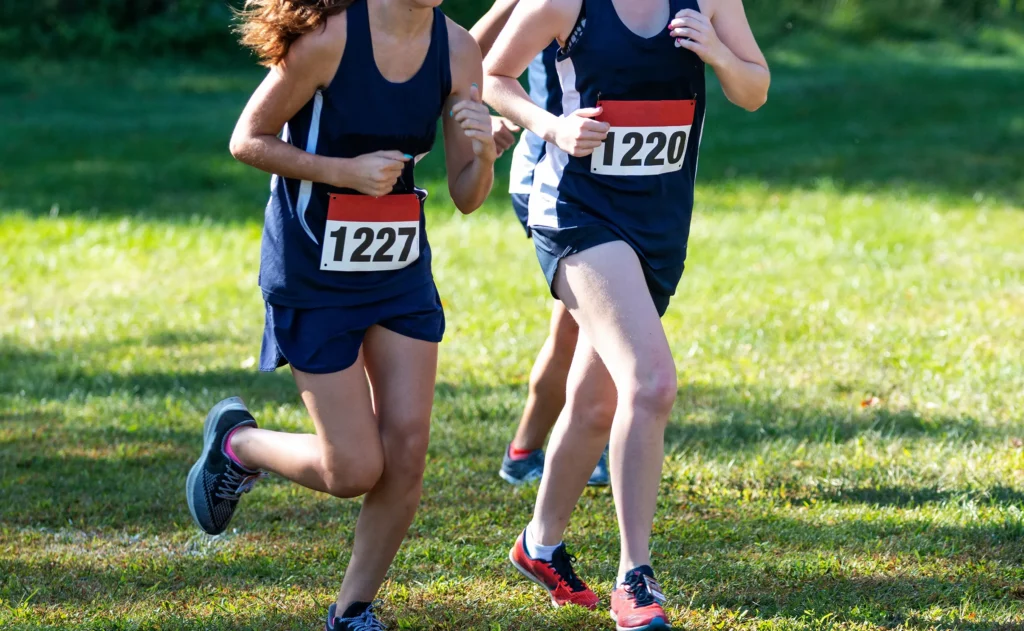What Is Patellofemoral Syndrome?
Patellofemoral syndrome (PFS), also called “runner’s knee”, is a pain in and around the patella (kneecap). Patellofemoral syndrome is one of the most common causes of pain in the front of the knee. Pain in the knee can occur for various reasons but is usually caused by increased pressure or abnormal motion. The patella normally rides in a groove (trochlea) on the lower end of the femur (thigh bone), and it gives leverage to the big muscles on the front of the thigh. These thigh muscles are called the quadriceps because they consist of four muscles. With patellofemoral syndrome, there is an imbalance in these muscles, which can affect the biomechanics of the patellofemoral joint and thus increase the stress below the kneecap.
What Causes Patellofemoral Syndrome?
Risk Factors
Risk factors for patellofemoral syndrome can include foot problems, such as foot pronation (flat feet), weak lateral hip muscles, minor imbalance of the quadriceps, and leg misalignment. These can all affect the biomechanics of the patellofemoral joint. Too much activity or more activity than normal, such as a sudden change in how hard or how long your child works out or trains, is a common cause of knee pain.
Patellofemoral Syndrome and Sports
Patellofemoral syndrome usually happens in people who play sports that involve a lot of knee bending and straightening, such as running, basketball, soccer, and lacrosse. Patellofemoral syndrome is more common in women and happens most often to teens and young adults. It can even happen to people who do not do a lot of sports.
Diagnosing and Treating Patellofemoral Syndrome
Warning Signs of Patellofemoral Syndrome
Patellofemoral pain often gets worse with walking, kneeling, squatting, going up or down stairs, or running. It may also occur after sitting with a bent knee for a long time, such as in a long car ride or in a movie theater. Your child may feel a “popping” or creaking after getting up from sitting or when going up or down stairs. This can occur in one or both knees.
Imaging For Patellofemoral Syndrome
An examination of the knee by the doctor is often all that is needed to diagnose anterior knee pain. X-rays may be needed if your child’s pain has lasted a long time or if there are signs and symptoms of another condition. Other tests, such as a CAT scan, MRI scan, or bone scan are rarely needed.
Treating Patellofemoral Syndrome
Treatment of patellofemoral syndrome is aimed at relieving discomfort. Apply ice or cold packs for 15 to 20 minutes to your child’s knee after activities. Put a thin towel between the ice and your child’s skin to protect it from getting too cold. Give your child acetaminophen (Tylenol®) or ibuprofen (Motrin® or Advil®) for pain. Follow the directions that come with the medicine for how much to give and how often.
Reduce Patellofemoral Syndrome Pain
Exercises that stretch and strengthen the hips and legs help symptoms from patellofemoral syndrome improve. Your child may benefit from an at-home exercise program and/or learning special exercises in physical therapy. The plan may include stretching, squats, planks, lunges, and other exercises that improve the strength and flexibility of the legs and hips.
Your child’s knee may benefit from taping or wearing a knee support or strap just under the patella.
Many people will need to cut back or even stop sports for some time. Training may need to be modified. Patients are usually ready to return to sports when:
- Hip, leg, and core strength is near normal.
- Flexibility in the hips and legs has improved.
- There’s no pain with everyday activities, such as walking and going up/down stairs.
- Any pain with the activity is very mild and goes away within a few minutes of starting the activity.
Healing Times
Sometimes it can take months to years for the symptoms of patellofemoral syndrome to fully resolve though anterior knee pain does not lead to more serious knee problems in the future.
To lower the stress on their knees after healing, young athletes should:
- Warm up and stretch before running or other sports, and avoid overtraining.
- Wear supportive running shoes and replace them often.
- Run on soft, flat surfaces (such as grass, dirt, or a synthetic track with a softer surface).
- Increase the intensity of workouts slowly.
When To See The Pediatric Orthopedic Center
If you feel your child is experiencing symptoms or signs related to this condition, it may be time to visit us. The Pediatric Orthopedic Center is the premier NJ hub for pediatric orthopedics, with three offices throughout northern NJ. Having been the leader in pediatric orthopedics in this area for over 25 years, we are the largest and most award-winning pediatric orthopedic practice in the tri-state area.



